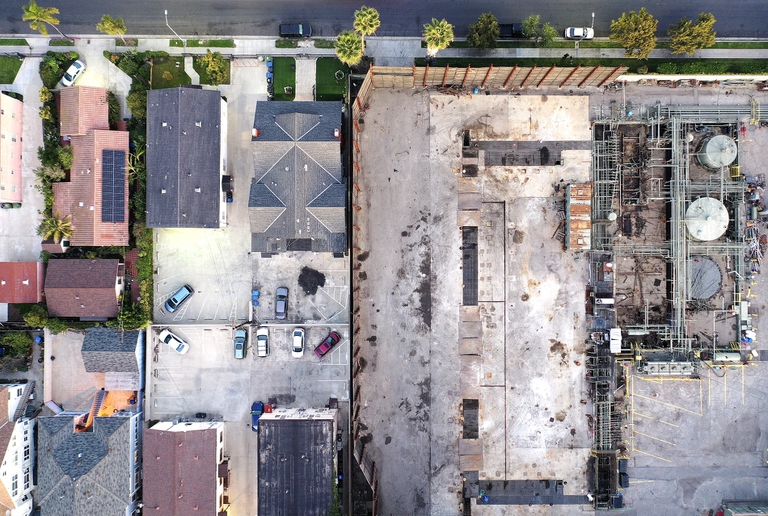https://www.lifegate.it/los-angeles-fine-trivellazioni-petrolio-gas
- |
- In the megalopolis Los Angeles, numerous polluting oil wells are active, often located near the neighborhoods of less affluent communities.
- The Los Angeles City Council has voted unanimously to ban the drilling of new oil and gas wells and to eliminate existing ones over the next 20 years.
- This is a historic move in a city that was built thanks to the fossil fuel industry, but whose residents have suffered harmful consequences for decades.
Los Angeles it's not just Hollywood and Malibu.In the less famous neighborhoods of the Californian city, the sets and beaches are just a mirage:to dominate the landscape they are the oil wells and the machines for extracting natural gas from underground.A damage that is not only visual, given that citizens have been suffering for decades they protest against pollution which compromises their health.To put an end to the problem, on December 4, 2022 the Los Angeles city council has voted unanimously a ban on the drilling of new oil and gas wells and the gradual closure of existing ones over the next 20 years.

Los Angeles and oil
The food industry fossil fuels played a huge role in the early development of Los Angeles, when the petrolium it was easy to access and there was a clear separation between production areas and residential neighborhoods.In 1890, when there were only 50 thousand inhabitants (today there are about 4 million), they came discovered some of the most productive oil fields in the United States.Today, many are sold out, but there are still several in operation.
According to official sources from the city administration, in 2018 there were 780 active and 287 inactive wells within the boundaries of the metropolis.An inactive well is an unexploited deposit which, however, not being permanently sealed, could be brought back into production.Several clusters of active wells, located near homes, ballparks and child care facilities, they are located in the populous neighborhoods of Long Beach, Carson and Inglewood.Near Long Beach is the prolific Wilmington oil field, which produced more than 10 million barrels of crude in 2019, according to state records.
Damage to the environment and health
Some recent scientific studies examined the possible effects of pollution from oil and gas wells.Researchers at the University of Southern California found in 2021 that people living near wells in the University Park and Jefferson Park neighborhoods reported significantly higher rates of breathing problems, eye and nose irritation, sore throat and dizziness.Both of these communities are predominantly inhabited by African-American people and people of Central and South American origin.
The Los Angeles City Council's vote comes later over a decade of complaints from residents, but not everyone agrees.The decision is opposed by the oil industry, whose leaders have warned officials that the phaseout will hurt local finances and make the city dependent on foreign oil.However, the air in many neighborhoods is destined to improve;furthermore, this could push many industries to opt for ecological fuels.“In Los Angeles, we live on top of the largest urban oil depot in the world,” said council member Marqueece Harris-Dawson before the vote that ended with 12 votes in favor and zero against."So if Los Angeles can do it, cities around the world can do it.”
